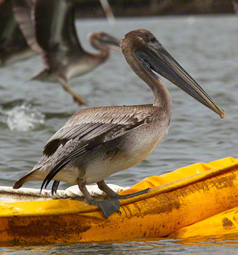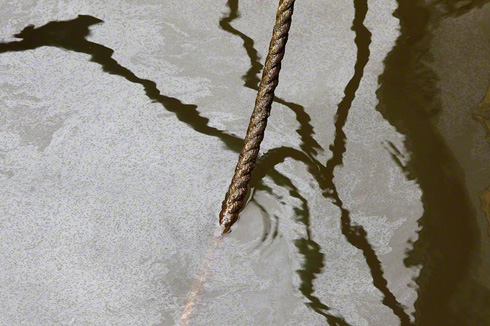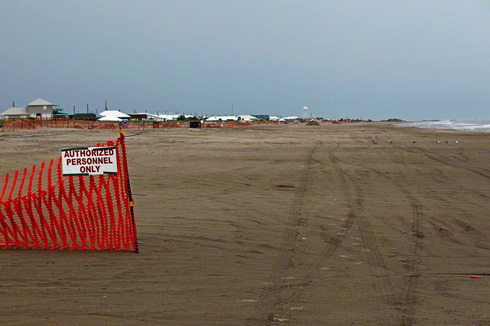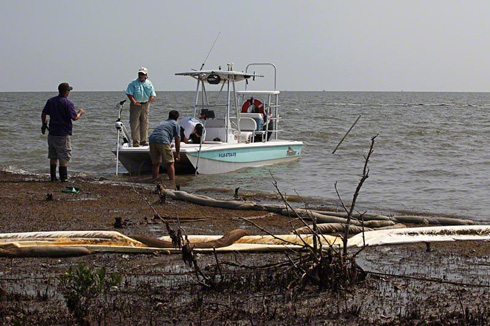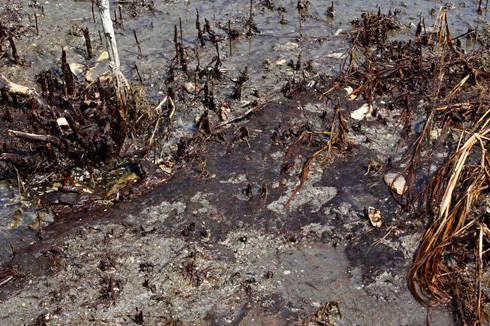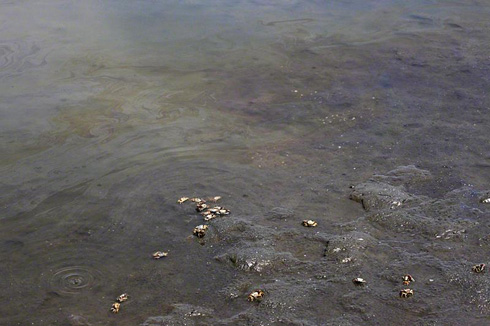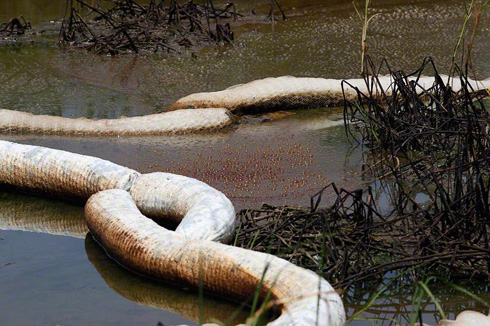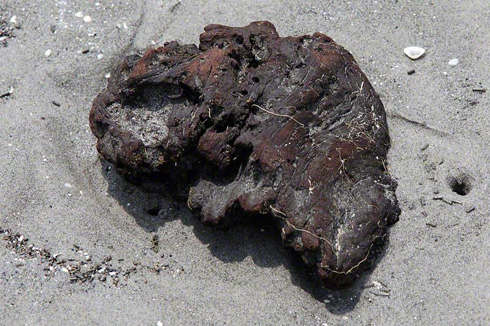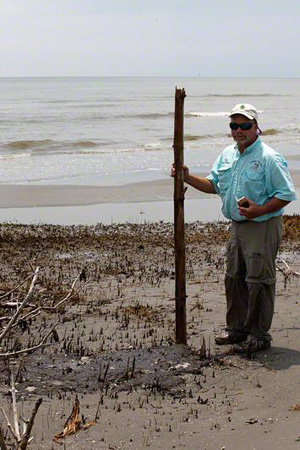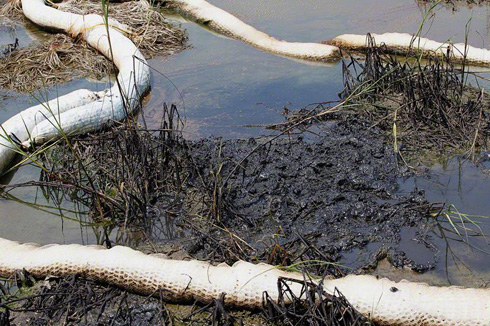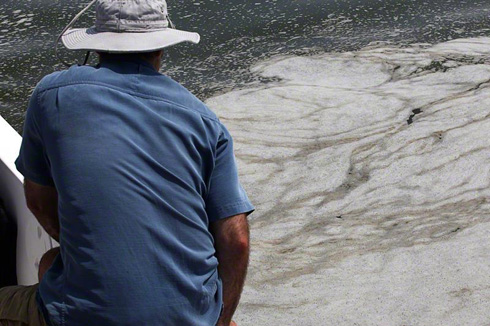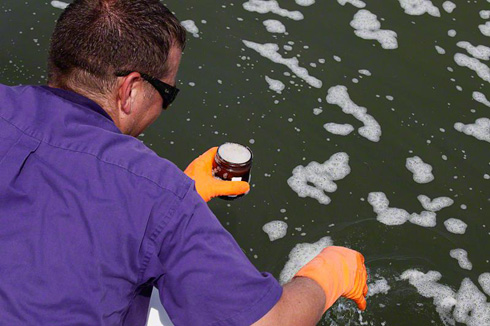|
In August, Truthout conducted soil and water sampling,
...in order to test for the presence of oil from BP's Macondo Well.
Laboratory test results from the samples taken in these areas show
extremely high concentrations of oil in both the soil and water.
The lower reporting limit
the analyst is able to detect from a solid sample is 50 parts per
million (ppm).
Oiled mooring rope and oil sheen on water's surface inside Christian Harbor, Mississippi, August 13, 2010.
(Photo: Erika Blumenfeld)
A water sample from inside Pass Christian Harbor, Mississippi, taken
on August 13, contained 611 ppm of TPH. Seawater that is free of oil
would test at zero ppm of TPH.
Grand Isle beach, Grand Isle, Louisiana, August 16, 2010.
(Photo:
Erika Blumenfeld)
A soil sample containing tar balls from the beach on Grand Isle,
Louisiana, taken on August 16, contained 39,364 ppm of TPH.
Sampling team on oil-soaked beach, Casse-Tete Isle, Louisiana, August, 16, 2010.
(Photo: Erika Blumenfeld) A sample of soil taken from this area contained 40,099 ppm of TPH.
Much of the marsh grass was stained black and brown with oil.
Oiled sand and marsh grass, Casse-Tete Isle, Louisiana, August, 16, 2010.
(Photo: Erika Blumenfeld)
A sample of marsh grass in this area of Casse-Tete Isle contained
144,700 ppm of TPH.
Oil sheen-covered tidal pool and fiddler crabs, West Timbalier Isle, Louisiana, August 16, 2010.
(Photo: Erika Blumenfeld)
Stay informed with free Truthout updates delivered straight to your
email inbox. Click here to sign up.
Oil-soaked lagoon, West Timbalier Isle, Louisiana, August 16, 2010.
(Photo: Erika Blumenfeld)
A water sample taken from an inland lagoon on West Timbalier Isle
contained 521 ppm of TPH.
Fist-sized tar ball, West Timbalier Isle, Louisiana, August 16, 2010.
(Photo: Erika Blumenfeld) West Timbalier Isle, Louisiana, August 16, 2010. (Photo: Erika Blumenfeld)
Oiled soil within inland lagoon, West Timbalier Isle, Louisiana, August 16, 2010. (Photo: Erika Blumenfeld)
Emulsified foam and oil in open water between Timbalier Isle and Port Fourchon, Louisiana, August 16, 2010.
(Photo: Erika Blumenfeld)
Fishermen and other journalists across the Gulf have reported to
Truthout that this phenomenon is what is left after dispersants have
been used to sink surface oil.
Jonathan Henderson with the Gulf Restoration Network taking water samples in emulsified foam area between Timbalier Isle and Port Fourchon, Louisiana, August 16, 2010.
(Photo: Erika Blumenfeld)
The US Coast Guard claims that no dispersants have been used since
mid-July.
A comprehensive sampling regime across the Gulf, taken regularly over the years ahead, is clearly required in order to implement appropriate cleanup responses and take public safety precautions.
|

